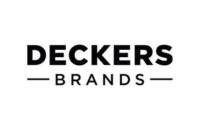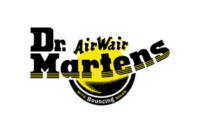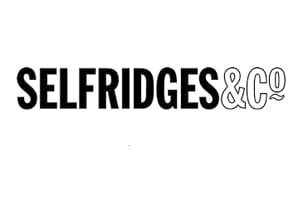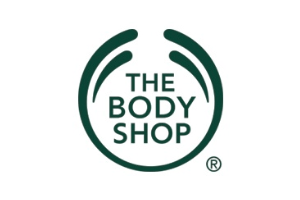The Retail Hive: Digital Café, 24th October
To outsource or not to outsource? How can tailored, in-store experiences be replicated online? Can AI and automation improve customer experience? What do US customers value the most when it comes to customer service? How can customer insights be leveraged effectively? And what is the future of WhatsApp as a customer service tool?
Our members recently came together on Zoom to explore how customers can truly be cared for and satisfied online. During this discussion, members honed in on in-house teams vs. outsourcing, with a particular focus on moving providers, writing RFPs, going through tenders, picking sites, and building credible business cases. Members also explored workflow management and personalisation tools, chatbots, automation and AI as means to improve customer experience.
From this, our Senior Community Manager, Rose Crowhurst has put together some top tips for perfecting your customers’ online journey, maximising customer satisfaction, and boosting loyalty.

Tip 1
Don’t underestimate the level of time and effort needed to create a comprehensive RFP. Most outsourced providers can do pretty much anything, so when building a RFP, be clear on what you need and make absolutely certain the dedicated resource is in place for your operation to work.
More than often, working with an outsourced provider is not lift and shift. You can’t always rely on the provider to independently carry out the level of training needed to ensure your new team is ready to go, and that your customers aren’t negatively impacted. This could mean the distance your team needs to travel to visit outsourced sites is a deciding factor when choosing a new site.
The most important priorities are always people first, then choosing a location that aligns with your brand, then technology.
Tip 2
For members that are moving suppliers, be mindful of the cost of your HR and finance teams as moving can come with a lot of risk attached. If timelines are missed and advice is not followed, moving suppliers can become a very costly process.
During this process, always go back to your core brand ethos, ensuring that your outsourced provider understands your brand. Allowing the provider to talk you through information on the software they offer should mean they are more compelled to build an offer for you.
Use the industry prestige of your brand when negotiating with providers. Suggesting that you will work with the provider to supply a case study and are willing to be used as a portfolio case will give you more bargaining power.
Tip 3
Before confirming, consider where your outsourced site is based. If it is in a young, vibrant city, the provider should have no problem attracting high-calibre candidates from a wide variety of nationalities. You could utilise this diverse pool to build a multi-language team cheaply, without going too far from home.
Seemingly, South African sites currently offer the lowest cost for an English-language service. Operating from the UK can be nearly double this, so a hybrid strategy with sites based inside and outside the UK might be optimal from a cost perspective.
The group agreed it is important that you go onsite to meet and onboard outsourced teams. You need to make the satellite services feel part of the brand and ensure the right standard of training that matches your brand’s style and messaging.
Tip 4
If you’re interested in incorporating order forecasts into the forecasting tool and utilising historical data from multi-channels, it’s important that whatever tool you use gives you access to a resource planning manager. Most workflow management tools have the capability to provide you with the modelling systems you need, but you will also need someone who can manage and interpret this data daily.
A key challenge for our members is that despite a lot of effort, it’s very hard to build forecasts with a high level of accuracy. You may, therefore, need to over-resource at an additional cost to ensure that you have the right level of coverage across multiple channels.



Tip 5
When working with a new chat bot or email automation partner, it’s vital to define what is of top priority to automate. Providing your potential supplier with use case examples can help them to show you how their tool matches your specific needs.
It’s also important to discuss at length what the provider will need from you to get the tool up and running quickly. A key consideration is whether the automation needs to be fully integrated as this could slow the process down. Your IT team and tech stack need to be ready and available to work with this new solution.
Automation is almost always cheaper than using human advisors. When building a business case for new tools, show the board that in the long term, implementing this tech will save the company money. This cost saving should not reduce headcount, but be driven back into the business to increase the time available to staff to provide a much better level of service.
Members agreed that if your customer prefers to call and place orders rather than shop online, it isn’t wise to try to re-educate them to shop digitally. Instead, increase your support staff headcount so you can fulfil these orders as quickly as possible. A higher conversion rate through customer service and great customer feedback will help to justify the increased cost of resource to the business. Empowering humans to have the time to provide an elevated level of service is where the true value of bots and automation lies.
Tip 6
Generally speaking, US customers prefer to escalate with the aim of talking to a supervisor rather than an agent. They highly value one-to-one support and will take time to talk through their order with an agent. They expect that advisors have a strong working knowledge of your brand and operations. Therefore, you might need to provide more resource for your US customer-facing team than for other regions.
Tip 7
Brands and retailers are always looking for new ways to personalise their communications to their valuable customers and stand out in the crowded email space. META have stepped into this gap and introduced the opportunity for retail organisations to contact their customers via WhatsApp. Furthermore, retailers are seeing the humble text message be increasingly effective at driving conversion when sent at key trigger moments.
Our members concurred that WhatsApp and private messaging can be a useful tool for customer care and sales teams working in luxury, where it is used effectively as a bespoke, one-to-one clienteling tool. It may, however, not be as popular with the mass public. Do customers want to blur their private WhatsApp with impersonal messages from retailers?
When adopting WhatsApp, it is important to consider how you’ll use it to interact with your customers and which segments of your customer base you should be targeting.







Join Us Next Year!
We’ve got plenty more digital and in-person meetings coming up in 2024, so make sure you register your interest before winding down for Christmas.
